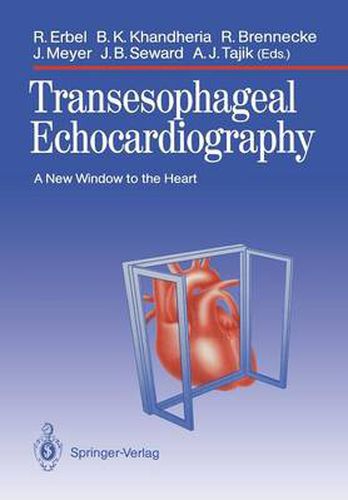Readings Newsletter
Become a Readings Member to make your shopping experience even easier.
Sign in or sign up for free!
You’re not far away from qualifying for FREE standard shipping within Australia
You’ve qualified for FREE standard shipping within Australia
The cart is loading…






This title is printed to order. This book may have been self-published. If so, we cannot guarantee the quality of the content. In the main most books will have gone through the editing process however some may not. We therefore suggest that you be aware of this before ordering this book. If in doubt check either the author or publisher’s details as we are unable to accept any returns unless they are faulty. Please contact us if you have any questions.
Echocardiography has been one of the most significant advances in cardiology in the past two decades. It can provide anatomic, functional hemodynamic, and blood flow information. Conventional transtho- racic echocardiography has limitations, particularly in certain patients such as those with obesity, chronic lung disease, or chest wall defor- mity, or in those where a transthoracic approach is difficult for reasons including trauma, life support apparat uses, and surgical dressings. There are also certain disease states or conditions in which transtho- racic echocardiography expectedly gives incomplete or inadequate in- formation. Transesophageal echo cardiography has opened a unique new window to the heart. The immediate proximity of the esophagus and the posterior heart permits exceptionally high resolution images, par- ticularly of the left atrium, mitral valve, and intraatrial septum. Addi- tionally, from the stomach (trans gastric views), the ventricles can be dependably imaged. Transesophageal echo cardiography presently is utilized in two environments: intraoperatively and for outpatient examinations. Intraoperatively, TEE is utilized to monitor cardiac function and de- tect intracardiac air or debris, to diagnose or quantitate cardiac path- ology, and to access operative results.
$9.00 standard shipping within Australia
FREE standard shipping within Australia for orders over $100.00
Express & International shipping calculated at checkout
This title is printed to order. This book may have been self-published. If so, we cannot guarantee the quality of the content. In the main most books will have gone through the editing process however some may not. We therefore suggest that you be aware of this before ordering this book. If in doubt check either the author or publisher’s details as we are unable to accept any returns unless they are faulty. Please contact us if you have any questions.
Echocardiography has been one of the most significant advances in cardiology in the past two decades. It can provide anatomic, functional hemodynamic, and blood flow information. Conventional transtho- racic echocardiography has limitations, particularly in certain patients such as those with obesity, chronic lung disease, or chest wall defor- mity, or in those where a transthoracic approach is difficult for reasons including trauma, life support apparat uses, and surgical dressings. There are also certain disease states or conditions in which transtho- racic echocardiography expectedly gives incomplete or inadequate in- formation. Transesophageal echo cardiography has opened a unique new window to the heart. The immediate proximity of the esophagus and the posterior heart permits exceptionally high resolution images, par- ticularly of the left atrium, mitral valve, and intraatrial septum. Addi- tionally, from the stomach (trans gastric views), the ventricles can be dependably imaged. Transesophageal echo cardiography presently is utilized in two environments: intraoperatively and for outpatient examinations. Intraoperatively, TEE is utilized to monitor cardiac function and de- tect intracardiac air or debris, to diagnose or quantitate cardiac path- ology, and to access operative results.